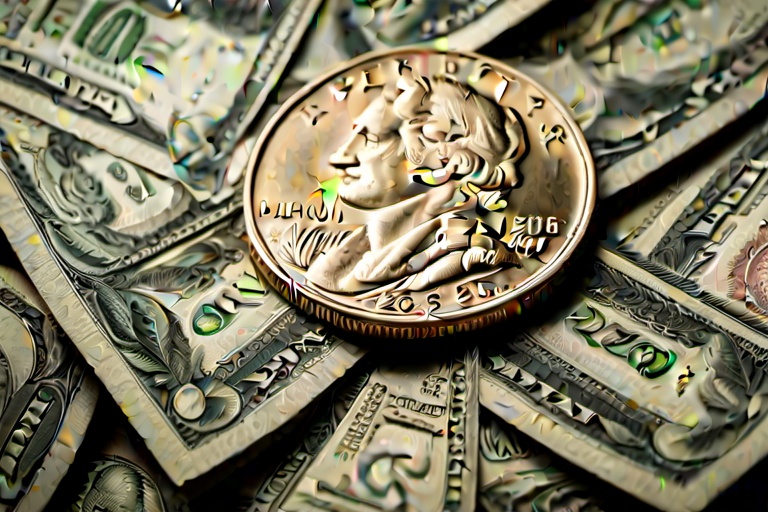Welcome to our insightful blog devoted to coin collectors and enthusiasts! Today, we embark on an exploration of a seemingly straightforward task—the art of flipping a coin. Although often regarded as a quick decision-making tool or a whimsical means to resolve minor disagreements, mastering the coin flip offers a delightful blend of skill and amusement. As we delve into the intricacies of this practice, we will discuss techniques and strategies to increase your probabilistic edge. Whether utilizing the flip as a practical solution or performing it purely for entertainment, this article seeks to enhance your familiarity with the process and refine your technique.
Welcome to our insightful blog devoted to coin collectors and enthusiasts! Today, we embark on an exploration of a seemingly straightforward task—the art of flipping a coin. Although often regarded as a quick decision-making tool or a whimsical means to resolve minor disagreements, mastering the coin flip offers a delightful blend of skill and amusement. As we delve into the intricacies of this practice, we will discuss techniques and strategies to increase your probabilistic edge. Whether utilizing the flip as a practical solution or performing it purely for entertainment, this article seeks to enhance your familiarity with the process and refine your technique.
The Fundamentals of the Coin Flip
Selecting a Suitable Coin
The choice of coin for flipping is largely subjective, mainly contingent on personal preference and the size of one’s hand. A newer coin with distinct edges and features may facilitate a clearer recognition of the toss's result. The tactile sensation of the coin’s surface and perimeter can further assist in predicting its trajectory and subsequent landing.
Preparing Your Hand
The thumb serves as the fulcrum and primary force for the coin's flight. Ensuring that your thumb is poised for action—thumb upwards and tucked beneath your index finger—paves the way for a crisp launch. Your positioning should allow the coin to sit comfortably atop the gap between your thumb and index finger without additional steadying.
Executing the Toss
A swift thumb motion is crucial for imparting the necessary momentum to the coin. This move, combined with a slight upward drive from your hand, can vary the intensity of the flip. Practice is essential in modulating the strength of your toss for either flamboyant spins or more subdued turns.
Tracking the Coin
Active observation from the release to the culmination of the coin's journey is key, whether you plan to catch it or allow it to fall unaided. The outcome of your toss is moot if the final orientation of the coin is unclear.
Strategy for Successful Predictions
Establishing the Endgame
Pre-determine whether you will catch the coin or let it rest upon a surface post-toss. This decision impacts the guessing strategy for the result. For instance, if the coin is to be caught, will it be revealed immediately, or after an anticipated reveal?
Factoring in Influences
Coin tosses may give the impression of pure chance, but they're subtly influenced by factors such as the coin’s weight distribution, any physical imperfections, and the angle of release. While not definitive, these elements can contribute to a more informed prediction.
Observing Initial Movements
The initial motion of the coin can provide insight into its potential outcome, particularly if one side is weighted differently or if the design induces a bias in how it spins. By knowing what to look for, you can bolster your predictive prowess.
Honing Your Skill
Persistence in practicing coin flips cannot be overstressed. Familiarity with different coins and flipping techniques will refine your intuition. Consistent practice will cultivate an almost innate ability to foresee the results.
Advanced Coin Flipping Tips
Commanding the Flip
If you can, opt to set the conditions of the toss, be it through selecting the coin side to guess or by executing the flip yourself. This oversight may offer a subtly advantageous position.
Surface Probability
There is a minor probabilistic favor—sometimes a 51% versus 49% chance—that the coin will land on the side that started facing upward. With a keen eye and mindful use of pristine coins, you can use this knowledge to skew the odds in your favor.
Manipulating the Ending
The fate of the coin might be influenced by its final act, be it a catch and flip or its unobstructed landing. Anticipate this and adjust your prediction accordingly, especially for the moment after the coin has been caught and subsequently turned over.
Tactile Differentiation
With a bit of cunning, assess the coin's face through touch. Tenderly feeling out the design might reveal the side you're holding, enabling a more calculated chance when guessing.
Soft Tossing
Limiting the coin's aerial rotations through a gentle toss gives you a better chance of tracking and, consequently, accurately speculating the outcome.
Overall, while the randomness inherent in a coin flip cannot be entirely eliminated, these tips and techniques can give you an edge over pure chance, transforming a simple toss into a nuanced skill. With practice, any coin enthusiast can learn to predict coin flips with a surprising degree of accuracy.
As you continue on your numismatic journey, we invite you to join us for the next installment in our series, where we will examine the intricate realm of coin grading and how it influences coin values. Stay curious, diligent, and above all, keep on flipping!
Information for this article was gathered from the following source.

